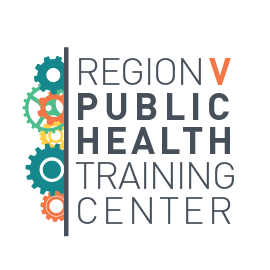By Shelby Brand, MPH, University of Illinois Chicago Center for Healthy Work
Each year, workplace violence (WPV), also known as occupational violence, affects millions of American workers. Assault is the fifth leading cause of workplace deaths. The Bureau of Labor Statistics (BLS) reported 20,050 injuries in 2020 and 481 fatalities in 2021 due to assaults.
Unfortunately, pinpointing the exact number of victims is often challenging because there is no single definition for workplace violence. Predominantly, workplace violence can be described as violent acts, ranging from threats and verbal abuse to physical assaults and homicide. This may leave some victims out, and others confused if their circumstance is considered WPV. In addition, without a standard definition, it becomes difficult to accurately measure the frequency of WPV and how it contributes to worker health and well-being, limiting the development of adequate protections for workers.
In July 2022, the U.S. Department of Justice (DOJ), the U.S. Department of Labor (DOL), and the National Institute for Occupational Safety and Health (NIOSH) published a special report titled “Indicators of Workplace Violence, 2019”. The report called on researchers to “establish reliable indicators of the nature and level of the problem across the nation.”
Additionally, no federal law or specific standard from the Occupational Safety and Health Administration (OSHA) addresses WPV, leaving states to establish regulations. Of the states served by the Region V Public Health Training Center (RVPHTC), only Illinois, Minnesota, and Ohio have state law requirements for workplace violence prevention. Illinois has the most comprehensive law, which requires healthcare facilities to design a workplace violence prevention plan (WPVPP) and train staff, along with several more safeguards. Most state laws regarding WPV are geared toward healthcare, leaving other high-risk industries without specific guidance.
High-Risk Industries
The healthcare and social assistance industry (e.g., ambulatory healthcare services, hospitals, nursing and residential care facilities, and social assistance) has the highest number of nonfatal WPV incidents, significantly higher than any other industry. Other high-risk industries include security services, public administration, education, law enforcement, retail trade (specifically late night), public transportation, and accommodation and food services. These industries are considered higher risk because of the following factors:
- Exchange of money.
- Delivery of passengers, goods, or services.
- Having a mobile workplace.
- Working with unstable or volatile persons.
- Working in small numbers or alone.
- Working late at night or during early morning hours.
- Working in high-crime areas.
- Working in community-based settings.
WPV towards public health workers has been understudied. Although all public health workers are not specifically included in the WPV high-risk industries, they faced unprecedented harassment, discrimination, hostility, and threats during the COVID-19 pandemic. NIOSH utilized data from a survey distributed in 2021, conducted by the Centers for Disease Control and Prevention (CDC), to describe the prevalence of nonphysical WPV against public health workers. Overall, 12% of public health workers had received job threats, 24% were bullied or harassed, and 32% experienced at least one form or combination of forms of WPV since the start of the COVID-19 pandemic.
Types of Violent Incidents
OSHA has categorized WPV into four types based on the relationship between the perpetrator and the victim(s). Each of these types of violent incidents can occur in any industry.
Type 1 – Criminal Intent: Violent acts committed by a person who enters the workplace to commit a criminal act before the violence. Examples include robbery, shoplifting, and loitering.
Type 2 – Customer/Client/Patient: Violent acts committed by customers, clients, patients, students, inmates, and any others to whom the workplace serves.
Type 3 – Worker-on-worker: Violent acts committed by a current or former employee(s) targeted towards a current or former employee(s).
Type 4 – Personal Relationship: Violent acts committed by someone who is not an employee but has a personal relationship with an employee at the workplace.
Warning Signs of Violent Incidents
It is difficult to predict violent behavior, and while each perpetrator’s behaviors may vary, it’s important to be aware of possible warning signs that might signal future violence. These include:
- Excessive use of alcohol or drugs.
- Unexplained absenteeism or decline in job performance.
- Depression, withdrawal, or suicidal comments.
- Violation of company policies.
- Blatant or intentional disregard for others.
- Disruptive, aggressive, or angry language.
- Wrongfully damaging or destroying property.
- Extreme changes in behavior.
Workplace Violence Prevention Plans (WPVPP)
WPVPPs are the gold standard for addressing WPV. WPVPPs, along with engineering controls, administrative controls, and training, can reduce incidents of workplace violence. Implementing prevention and control measures can equip employees with the skills and knowledge necessary to recognize hazards that may lead to a violent incident, improving employee safety.
OSHA, NIOSH, and the Interagency Security Committee have all published guidance for developing WPVPPs. Although specific details of each guidance vary slightly, the fundamental components for building an effective WPVPP include:
- Management Commitment and Employee Participation
- Worksite Analysis and Hazard Identification
- Hazard Prevention and Control
- Health and Safety Training
- Record-Keeping and Program Evaluation
Additionally, it’s vital to have a written statement of the policy to emphasize an organization’s commitment to preventing WPV.
To learn more about the incidence of workplace violence and to see how one organization, the University of Illinois Hospital and Clinics, developed a Workplace Violence Policy and Procedure guide in accordance with Illinois’ Health Care Violence Prevention Act, read this policy brief.
To learn more, check out these resources:
- Workplace Violence: Using Technology to Reduce Risk, National Safety Council
- Recommendations for Workplace Violence Prevention Programs in Late-Night Retail Establishments
- Workplace Violence Strategies and Research Needs
- Violence in the Federal Workplace: A Guide for Prevention and Response
- Violence in the Federal Workplace: Appendices
- Workplace Violence Resources from NIOSH
- Workplace Violence Resources from OSHA

